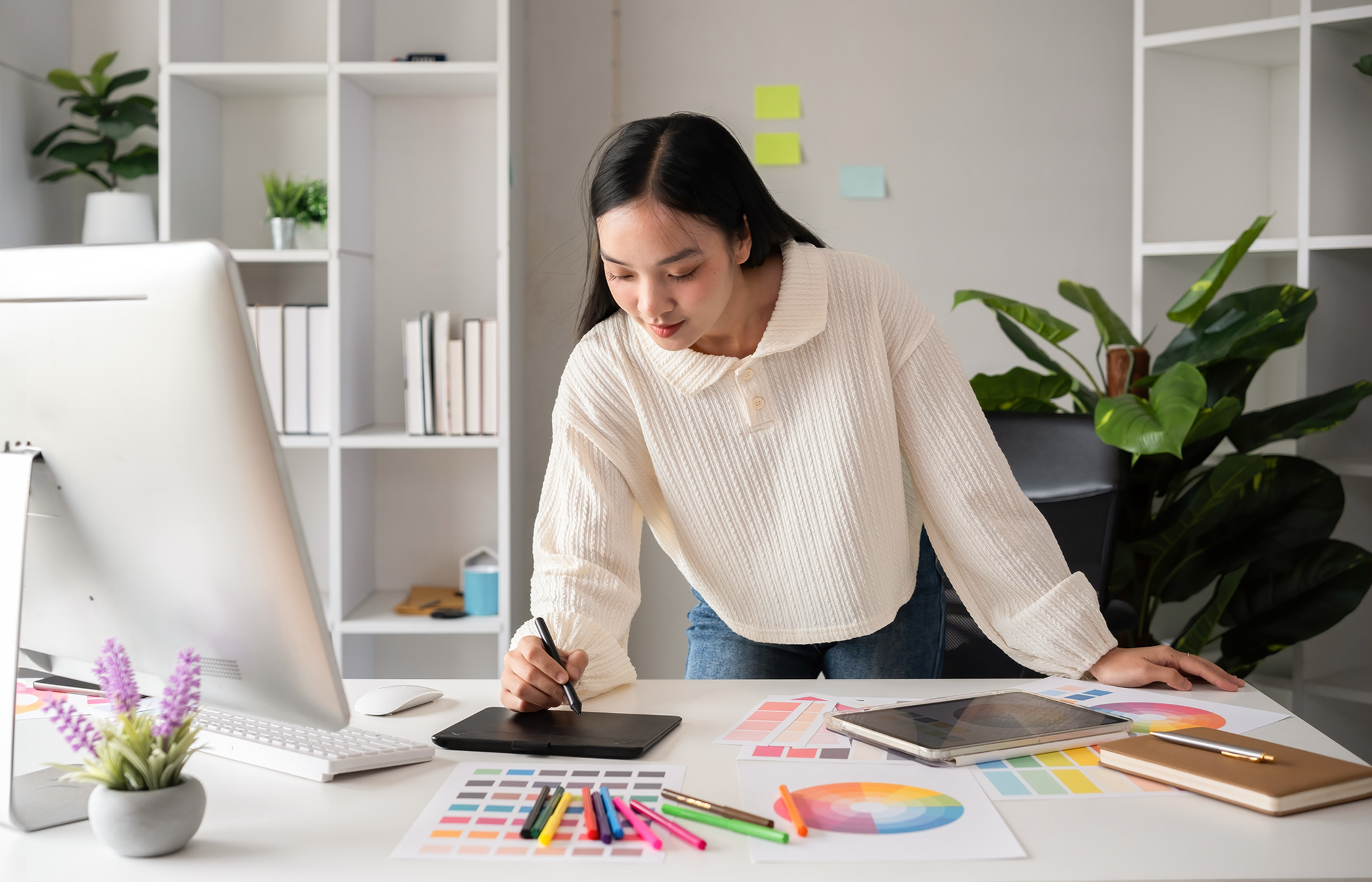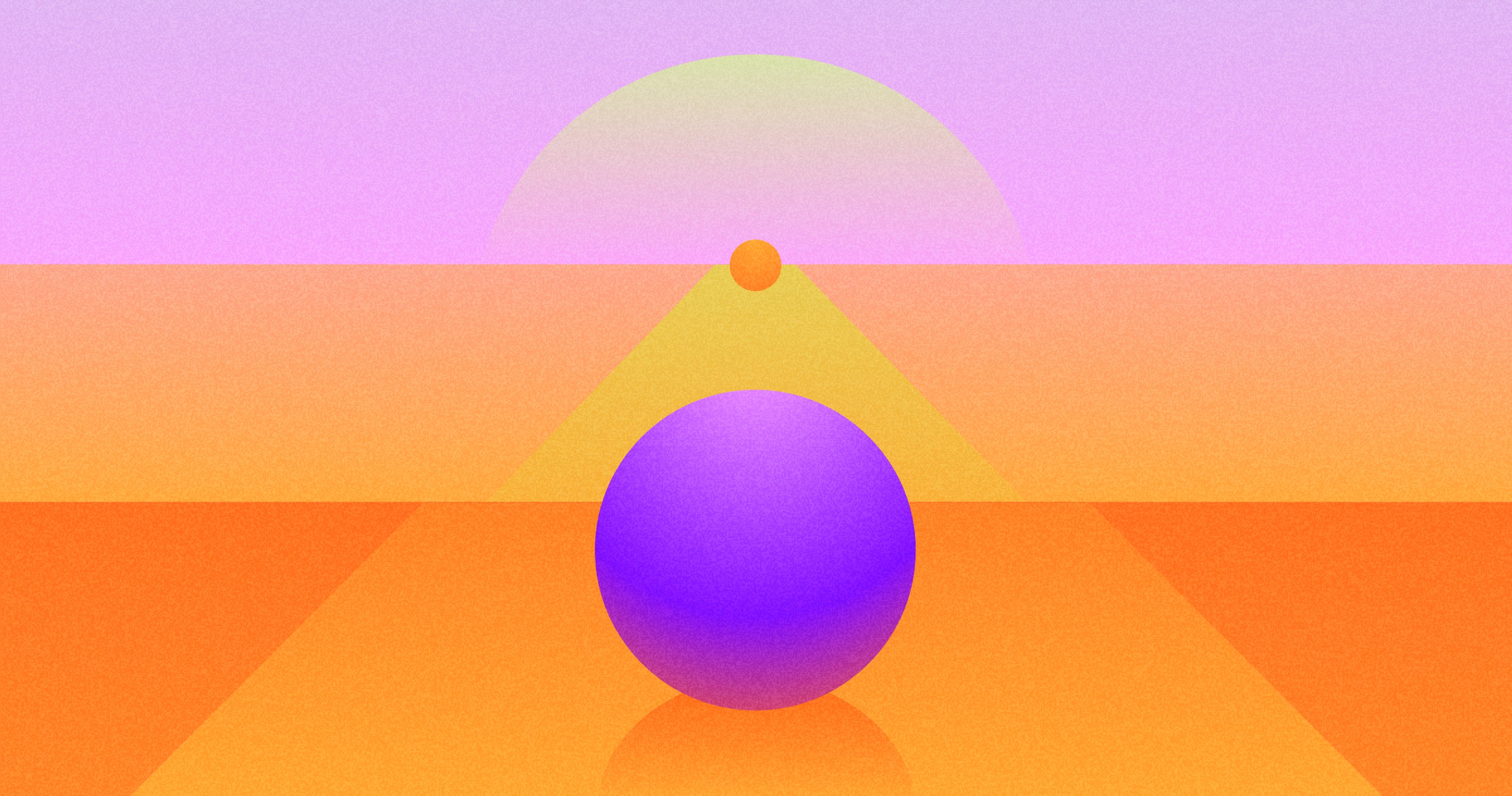Product designers are among the most important people in successful business and UX design. They are the ones responsible for coming up with innovative products that meet customer needs.
This requires them to understand what customers want, what technology is available, and what the competition is doing so they can create solutions that work.
It’s their job to know how to combine design principles with engineering concepts to develop products that stand out and impact anyone who uses them.
Since we’re living in an age with so much technology at our fingertips, it makes sense for product designers to turn ideas into reality faster than ever – making them pretty valuable members of any company looking to stay ahead.
Introduction to Product Designers
What Is a Product Design?
Designing a product is not as easy as it sounds. A lot goes into creating the perfect thing that everyone wants or needs. Whether you’re developing apps or software, furniture, or electronics, this practice lies at its heart with research – figuring out what people need and how they experience things first.
However, in recent years, more focus has been put on digital product creation to determine what this field of study truly means. Industrial design involves putting together manufactured items, which is still highly sought-after.
Source: Kumpan Electric on Unsplash
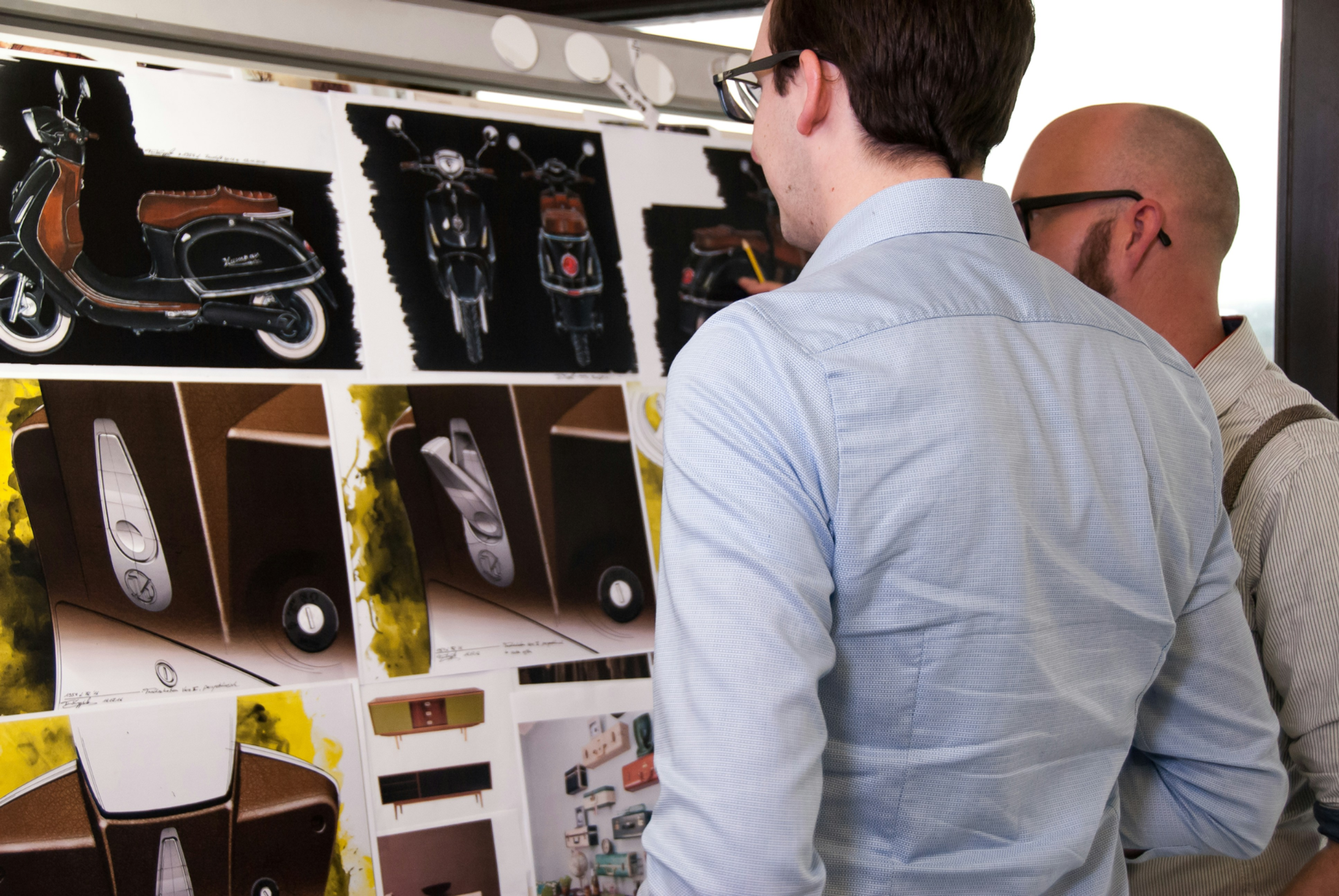
What Is a Product Designer?
These professionals serve as creative problem solvers who ensure the world keeps getting useful things. Combining engineering concepts with design principles, a product designer creates things that stakeholders never knew they needed but now can’t live without.
The job requires understanding customer desires, technological capabilities, competitor strategies, and desired features within your designs. You’ll also need data analysis skills to utilize feedback from real customers and research sources.
Product specifications must also be created during this process so you have all those details down pat from the get-go.
With such an influx of digital tools like Adobe Photoshop and Sketch, you won’t have to worry about your ability to bring your ideas to life quickly and efficiently. Prototyping will become easier, allowing for more brainstorming time for visual designers.
Your designs must also be user-friendly at their core. Incorporate UX principles into your everyday work so that everything is intuitive and simple for the end user to interact with.
Source: Alvaro Reyes on Unsplash

Making products is all good, but you must ensure yours are better than others. Stay on top of industry trends, collaborate with other experts like engineers, marketers, and UX researchers, take part in user testing sessions to get real feedback from people currently engaging with your design, meet deadlines consistently, and deliver high-quality products in record times. It’s a lot of work, but it keeps companies ahead of the game — which is ultimately why they pay you the big bucks.
Product Designers vs. UX Designers
Product designers and UX designers are two different roles with much in common. Both focus on the same things but with differing qualities. Product designers do just what it sounds like: they design products!
They do planning, research, and development from start to finish. They learn about what the customer wants and needs and about technology and design principles to create unique products that sell. Though it may sound like a product manager, it's a very different job.
UX designers test how products work once they’re made. Using user testing sessions and data analysis, they can see what works well with customers and what needs improvement. With this information, they ensure customers get exactly what they expect when interacting with a brand or product.
Source: Amélie Mourichon on Unsplash

While these jobs require many skills for designers to be successful, teams must understand that one team may need a product designer more than a UX designer and vice versa. The roles are similar but different enough for them to take on entirely separate projects.
What Are The Most Common Product Design Roles?
There are many titles someone working in product design could hold, such as:
- Interaction Design: Improves functionality of an interface interaction.
- Experience Architect: Maps user stories through info architecture and UI.
- Information Architecture: Organizes information so navigation feels intuitive.
- Industrial Design: Physical refinement of physical designs such as furniture.
Types of Product Design
Product design is a multifaceted field that encompasses a variety of disciplines, each with its own focus and methodologies. Here are some of the key types of product design:
1.
Digital Product Design: This discipline focuses on creating digital products such as software, apps, and websites. Digital product designers work on user interfaces (UI) and user experiences (UX), ensuring that digital products are intuitive, engaging, and meet user needs. They often use visual design tools and prototyping tools to bring their ideas to life.2.
Industrial Product Design: Industrial product designers are responsible for designing physical products like furniture, electronics, and machinery. This type of design involves a deep understanding of materials, manufacturing processes, and ergonomics to create products that are both functional and aesthetically pleasing.3.
Consumer Product Design: This area concentrates on creating products for everyday use, such as household items, toys, and appliances. Consumer product designers must consider usability, safety, and market trends to develop products that appeal to a broad audience.4.
Service Design: Service design aims to create end-to-end experiences that meet the needs of users, often involving multiple touchpoints and interactions. This type of design requires a holistic approach, considering not just the product itself but the entire user journey, including customer service and support.5.
Experience Design: Experience design focuses on crafting memorable and engaging experiences for users. This discipline often incorporates elements of storytelling and emotional connection, ensuring that users have a positive and impactful interaction with the product.
Each type of product design requires a unique set of skills and approaches, but all share the common goal of creating products that meet the needs and expectations of users.
Qualifications for a Product Designer
Like any other job, a candidate for this position should possess certain qualifications. Critical thinking, problem-solving communication, and collaboration skills are all necessary attributes.
Knowing User Experience (UX) principles and trending ideas within the industry is also important. Effectively using software tools, including Adobe Photoshop or Sketch, is crucial, too!
Source: Photo by Daria Nepriakhina 🇺🇦 on Unsplash
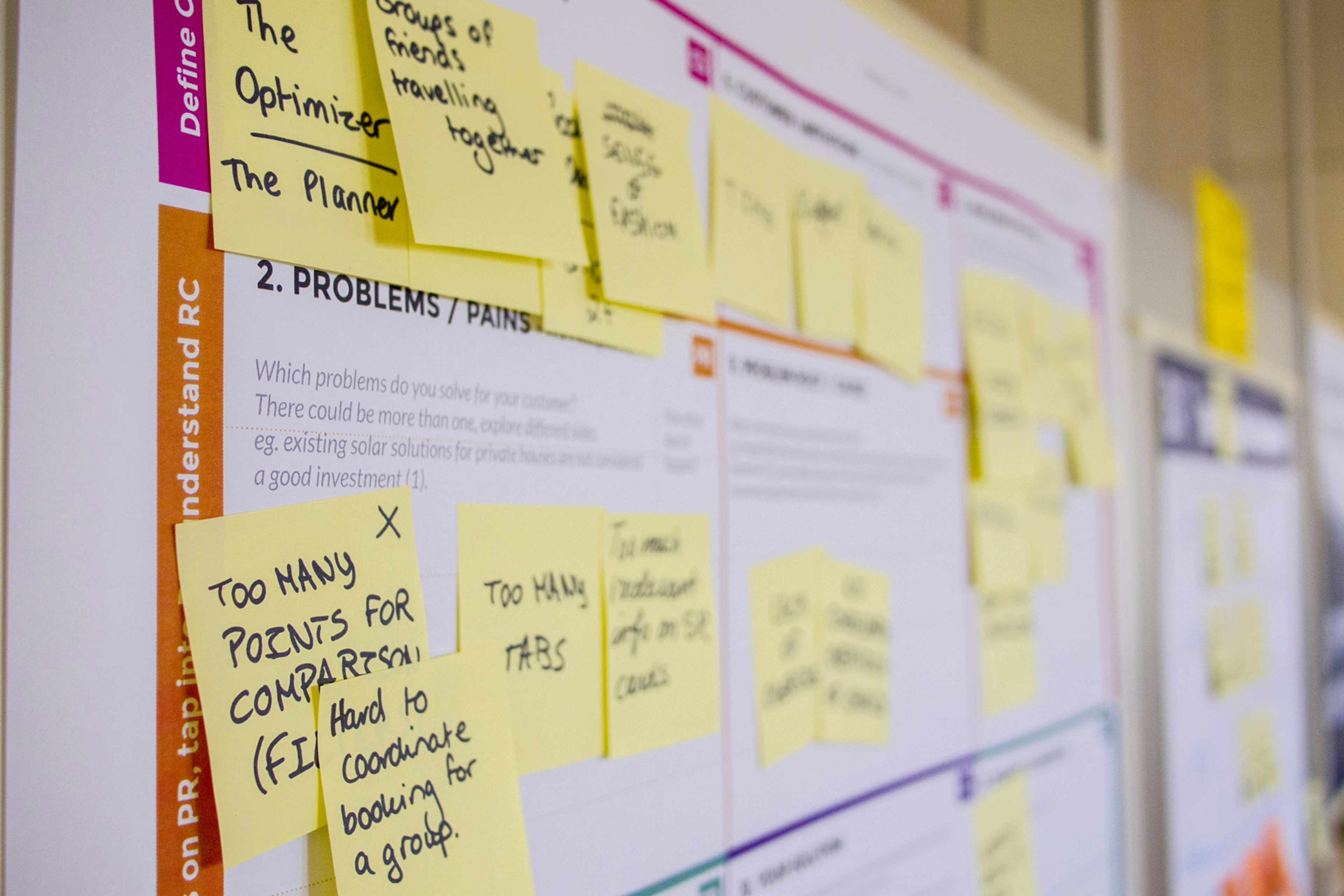
Lastly, the technical aspects of product design include knowledge of coding languages and web standards, which are needed for a successful career.
What Are Product Designer Skills?
It comes down to having a combination of technical and creative skills while still being able to problem-solve. Here are some examples.
Hard skills
- User research and testing
- Interaction and user interface (UI) design
- Visual design
- User experience (UX) design, including wireframing and prototyping
- Project management
Soft skills
- Creativity
- Leadership and teamwork
- Attention to detail
- Problem-solving
- Communication
- Empathy
- Decision-making and accountability
Source: Jason Goodman on Unsplash

How to Become a Product Designer
A product designer is responsible for shaping the look, feel, and functionality of both physical and digital products. This role requires a combination of creativity, problem-solving skills, and technical knowledge. If you want to become a product designer, follow these steps to build a strong foundation and launch your career.
Step 1: Understand the Role of a Product Designer
Product designers do more than create visuals; they work on the entire user experience. Their responsibilities include:
- User Experience (UX): Ensuring products are intuitive and user-friendly.
- User Interface (UI): Designing attractive and functional digital interfaces.
- Prototyping & Testing: Creating wireframes, mockups, and interactive prototypes to validate ideas.
- Collaboration: Working with developers, marketers, and stakeholders.
- Problem-Solving: Identifying and addressing user pain points through design solutions.
Step 2: Product Designer Education Requirements
There are multiple ways to gain the necessary knowledge and skills:
- Formal Degree (Optional):
- Bachelor’s degree in Industrial Design, UX/UI Design, Graphic Design, Human-Computer Interaction (HCI), or a related field.
- Self-Learning:
- Many product designers teach themselves using online resources.
- Platforms like Coursera, Udemy, Interaction Design Foundation (IDF), and Google UX Design Certificate offer affordable courses.
- Bootcamps & Certifications:
- Short-term intensive programs like General Assembly, CareerFoundry, and Designlab provide structured training.
Step 3: Develop Essential Design Skills
Product designers need both technical and soft skills to succeed.
Technical Skills:
- UX/UI Design: Understanding user needs, wireframing, and usability testing.
- Visual Design: Mastering typography, color theory, and layout.
- Prototyping & Design Tools: Proficiency in Figma, Sketch, Adobe XD, and InVision.
- Front-End Knowledge (Optional): Basic understanding of HTML, CSS, and JavaScript can be useful.
Soft Skills:
- Problem-Solving: Finding creative solutions to design challenges.
- Collaboration & Communication: Working with cross-functional teams.
- Empathy: Understanding users’ perspectives to create human-centered designs.
Step 4: Build a Strong Portfolio
A well-crafted portfolio is crucial for showcasing your skills and experience.
What to Include in a Portfolio?
- Case Studies: Show the design process from research to final prototype.
- Problem-Solution Approach: Explain the challenges faced and how they were solved.
- User Research & Testing Insights: Demonstrate a data-driven approach to design.
- Before & After Screenshots: Highlight improvements made.
Tips for a Strong Portfolio:
- If you lack professional experience, redesign existing apps or websites.
- Participate in UI/UX challenges to practice and showcase your work.
Source: Pinterest
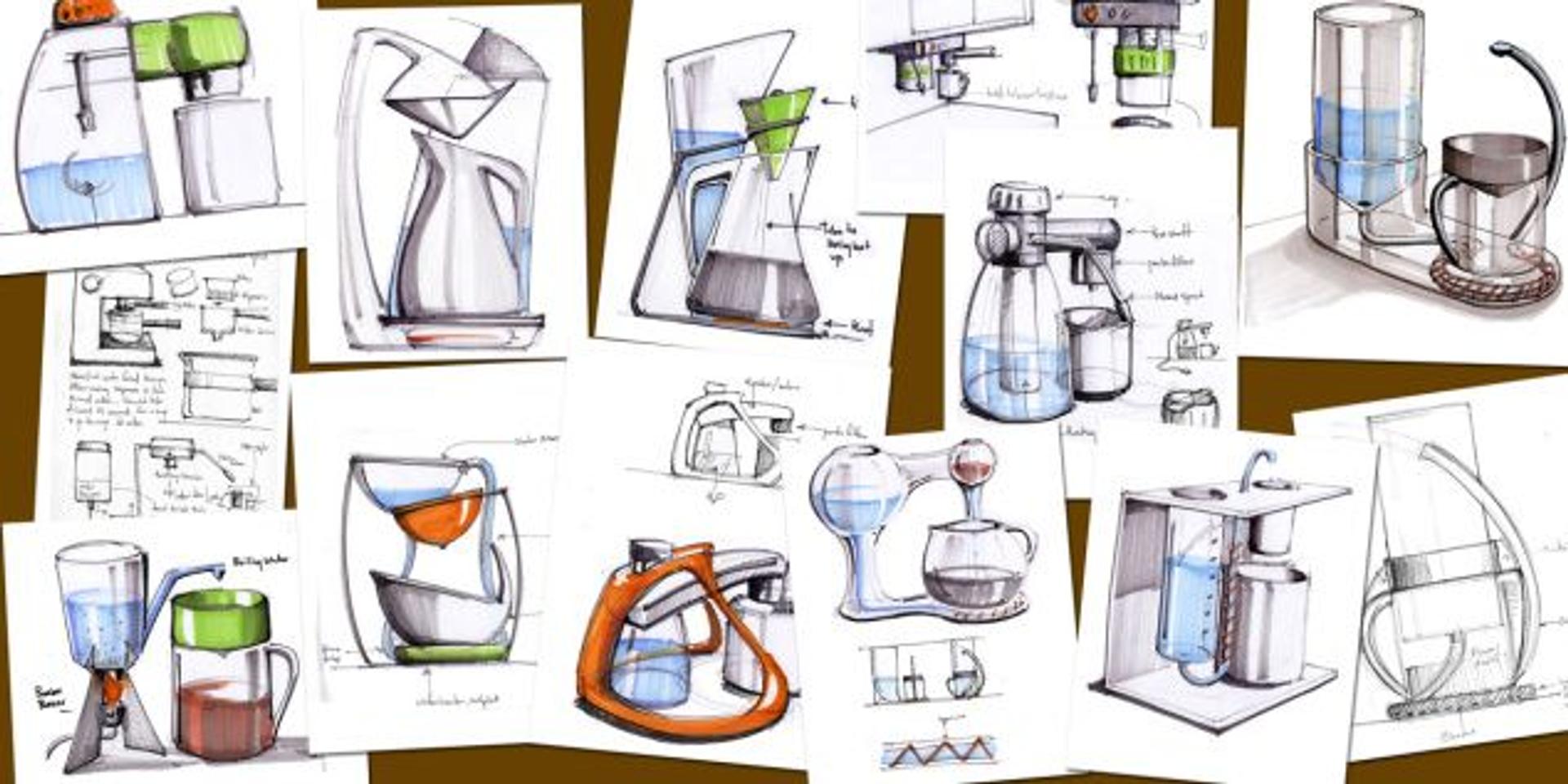
Step 5: Gain Real-World Experience
Hands-on experience is key to building confidence and credibility. Consider the following:
- Freelancing: Work on small projects through platforms like Upwork, Fiverr, or Behance Jobs.
- Internships & Apprenticeships: Gain structured work experience in a design role.
- Open Source Contributions: Contribute to open-source projects on GitHub or Dribbble.
Step 6: Network and Learn from the Design Community
Networking helps you stay updated on industry trends and opportunities.
- Join Design Communities: Engage in groups like Design Buddies (Discord), UX Mastery, and Dribbble.
- Attend Workshops & Conferences: Participate in events like Adobe MAX, Figma Config, and AIGA Design Conference.
- Follow Influential Designers: Learn from experts on LinkedIn, Twitter, and Medium.
Step 7: Apply for Jobs and Keep Learning
Once you have a solid portfolio, start applying for product design roles.
Common Job Titles for Product Designers:
- Product Designer: Focuses on UX/UI, problem-solving, and strategy.
- UX Designer: Specializes in user experience and usability testing.
- UI Designer: Works on interface design and visuals.
- Interaction Designer: Focuses on animations and micro-interactions.
Job Search Tips:
- Tailor your resume and portfolio for each application.
- Apply to entry-level roles or internships to gain experience.
- Keep improving your skills, as product design trends change frequently.
Collaboration and Communication in Product Design
Effective collaboration and communication are the cornerstones of successful product design. They enable product designers to work efficiently with cross-functional teams and stakeholders, ensuring that products are brought to life seamlessly. Here are some key aspects of collaboration and communication in product design:
1.
Design Handoffs: Ensuring that design files and specifications are properly handed off to development teams is crucial for accurate implementation. Clear and detailed handoffs help prevent misunderstandings and ensure that the final product aligns with the design vision.2.
Design Systems: Creating and maintaining design systems provides a shared language and set of components for designers and developers to work with. Design systems streamline the design process, promote consistency, and make it easier to scale designs across different products and platforms.3.
Feedback Loops: Establishing regular feedback loops with stakeholders and users ensures that design decisions are informed by user needs and business goals. Gathering user feedback through usability testing and user research helps product designers make data-driven decisions and iterate on their designs.4.
Communication Tools: Utilizing tools such as Slack, Trello, and Asana facilitates communication and collaboration among team members. These tools help keep everyone on the same page, track project progress, and manage tasks effectively.5.
Design Critiques: Conducting regular design critiques provides an opportunity for team members to give and receive constructive feedback. Design critiques help ensure that design solutions meet user needs and business goals, fostering a culture of continuous improvement.
By prioritizing collaboration and communication, product designers can ensure that their designs are implemented effectively and meet the needs of users and stakeholders. This collaborative approach not only enhances the quality of the final product but also strengthens the overall design process.
Product Designer Salary
Product designers can also look forward to bonuses and advancements each year they spend in the industry. After only a few years, you can expect salaries of around $60k, but if you’re a senior designer, you could make up to $125k or more. Some employers may even offer up to 25% of an individual's base salary as a bonus.
Where these designers work will also impact their income. Those in San Francisco or New York, cities home to many tech companies, who work for major tech companies will be paid more than those in other cities or industries.
Mobile designers are generally paid more than web designers, especially when they have worked on groundbreaking products many people use.
This makes product design one of the best-paying design jobs out there. Those with problem-solving and critical thinking skills and knowledge about user experience principles and software development tools stand to gain a lot financially and professionally from working in this field.
What Do Product Designers Typically Do?
No set profession exists for any kind of designer because every company will require something different from them. However, there are still some things that all product designers should know how to do by heart. These tasks include:
1.
Creating surveys and usability tests to check user feedback and determine what users want from your product.2.
Working with other team members to make sure the product satisfies all requirements.3.
Taking customer input into account when making improvements.4.
Constructing prototypes for testing purposes.5.
Researching new technologies and trends related to your industry so that you can create innovative products.6.
Managing projects within time limits and budgets.7.
Monitoring the success of finished products and making changes if they need to.
Source: John Schnobrich on Unsplash

The Future Of Product Designers
The product designer job pays pretty well right now, but it’s expected their wages will only increase moving forward. As technology advances rapidly, we’ll need new products just as fast, so good designers’ talents will become increasingly valuable over the next few years.
Thanks to AI, designers will likely spend less time on tedious tasks. The technology can already do all your analysis and testing for you, so you’ll have more time to make user-friendly designs that customers love. It also helps you identify issues with your products before they become too big of a problem.
Finally, we can expect to see design teams become increasingly diverse. Companies are starting to recognize that having multiple perspectives improves their products.
This means that UX researchers, visual designers, marketers, engineers, and other experts will work together more often moving forward. Product designers must improve their communication skills and find new ways of collaborating with those outside their field.
With an increased focus on sustainability and ethics in business, companies are doing all they can to make their product designs greener. But what does the future of product design look like?
Product designers will lead this change by incorporating eco-friendly materials into their creations and ensuring ethical practices are followed throughout manufacturing.
So, what does it take to be a product designer? For one, creativity is key. They’ll also need technical knowledge and an understanding of what customers want. With these skills, there’s no doubt that product designers will succeed in this rapidly changing industry!
Read More
Conclusion
To create products that customers love, we need innovative minds. Product designers have exactly that – and so much more! With technology advancing daily, designers must stay current on trends and learn automated technologies such as AI. Strong communication skills are also necessary because working within diverse teams is crucial to meeting customer needs.
Remember: creativity paired with technical knowledge makes a great designer — so start today if you have what it takes!
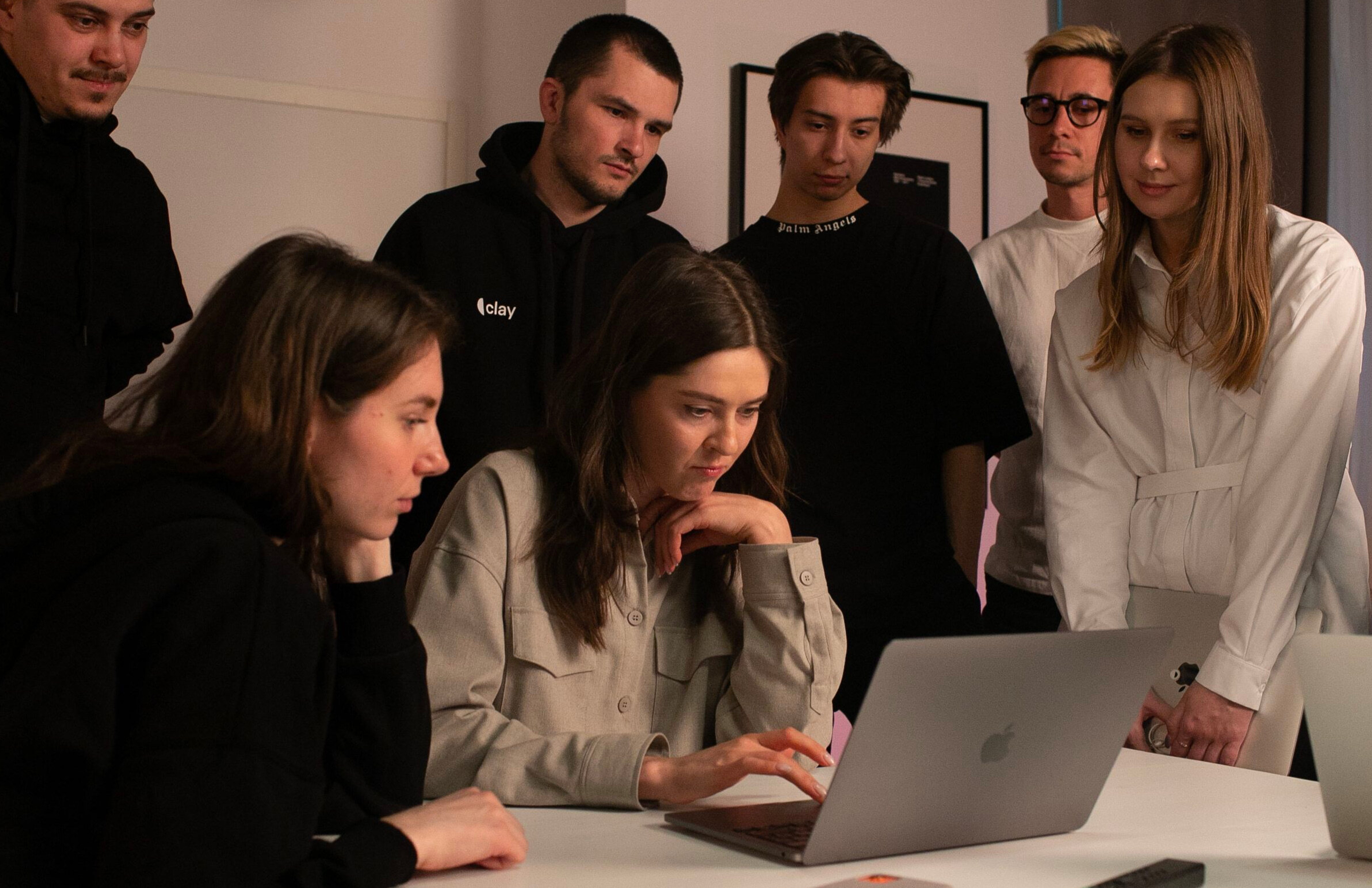

About Clay
Clay is a UI/UX design & branding agency in San Francisco. We team up with startups and leading brands to create transformative digital experience. Clients: Facebook, Slack, Google, Amazon, Credit Karma, Zenefits, etc.
Learn more

About Clay
Clay is a UI/UX design & branding agency in San Francisco. We team up with startups and leading brands to create transformative digital experience. Clients: Facebook, Slack, Google, Amazon, Credit Karma, Zenefits, etc.
Learn more